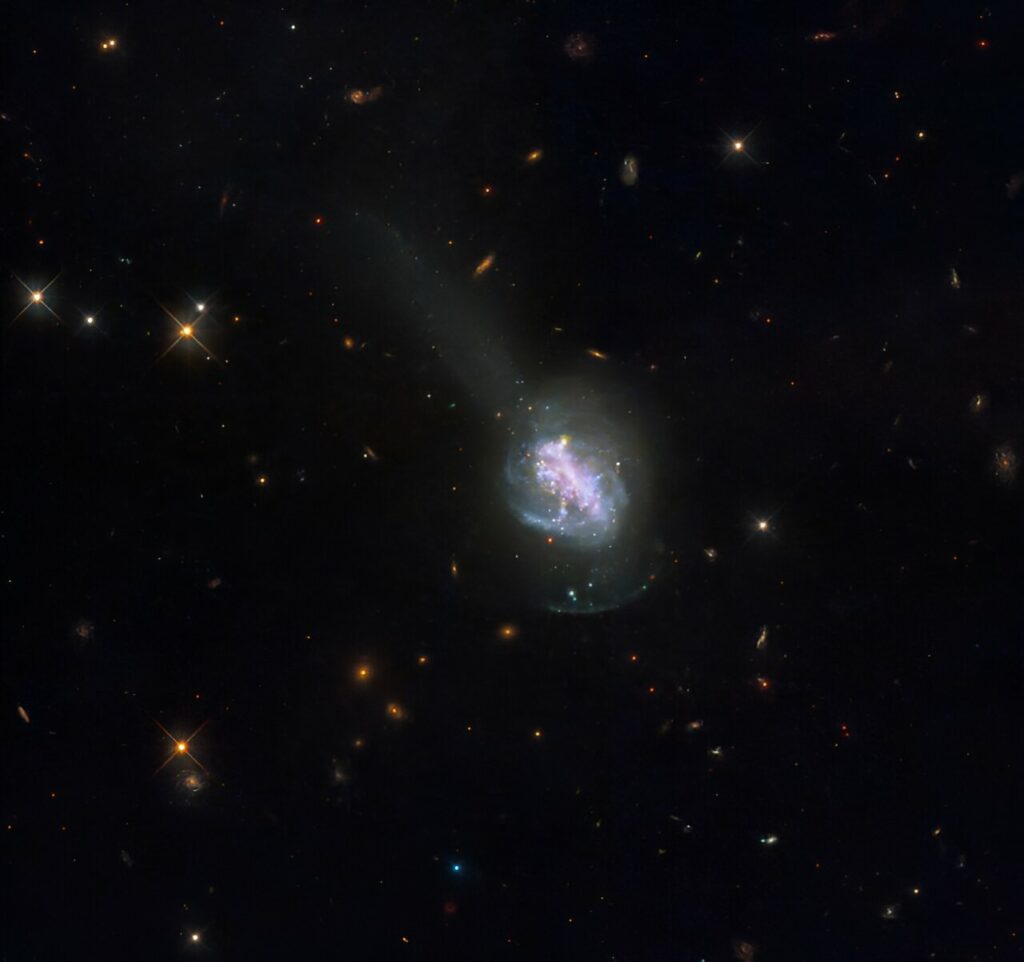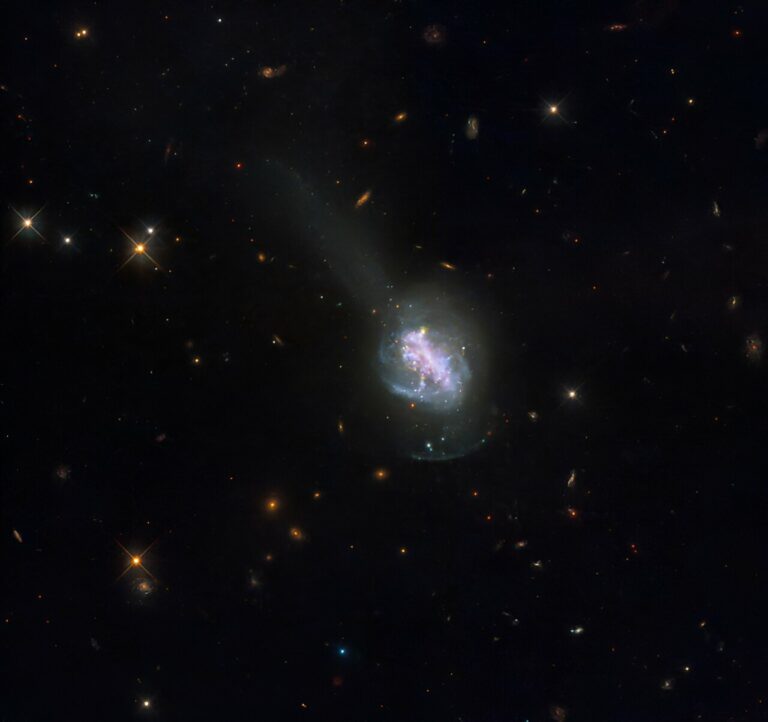Hubble Observes ESO 185-IG013
The recent image captured by the NASA Hubble Space Telescope showcases ESO 185-IG013, a bright blue compact galaxy known as a BCG. These galaxies, located nearby, exhibit a strong surge in star formation, making them stand out with their distinct blue hue in visible light compared to other high-starburst galaxies emitting more infrared light. BCGs are of particular interest to astrophysicists as they offer a close representation of galaxies from the early universe, shedding light on the processes of galaxy formation and evolution that occurred billions of years ago.
Hubble utilized ultraviolet, visible, and infrared wavelengths to capture ESO 185-IG013, unveiling insights into its history. The galaxy is teeming with hundreds of young star clusters, with many being younger than 100 million years, and a significant portion being a mere 3.5 million years old—comparatively young in the grand scheme of the universe.
It is anticipated by scientists that a considerable number of these youthful clusters will not endure, as they often dissipate their gas reserves too quickly. The abundance of young star clusters suggests that this galaxy recently experienced a collision and merger with another galaxy. The disrupted structure of the galaxy, likely resulting from the turbulent interactions of gas and dust during the collision, serves as further evidence. This merger provided the galaxy with ample fuel for ongoing star formation processes.

ESO 185-IG013 possesses a tidal shell, a faint radiance encircling its luminous core, which is a typical indication of galaxy mergers. Scientists hypothesize that during a galaxy merger, the larger galaxy disrupts the smaller one, causing it to lose a significant portion of its material. This released material is then drawn back in by the gravitational force of the larger galaxy. The concentrated region where the material resettles is referred to as the shell, housing numerous star clusters. Alongside the shell, ESO 185-IG013 also exhibits a gas tail extending towards the northeast.
The collective mass of all the stars in this system exceeds 7 billion times that of our sun. Situated approximately 260 million light-years away, this system is located at a considerable distance.
This article is republished from PhysORG under a Creative Commons license. Read the original article.
Do not forget to share your opinion with us to provide you with the best posts !





0 Comments